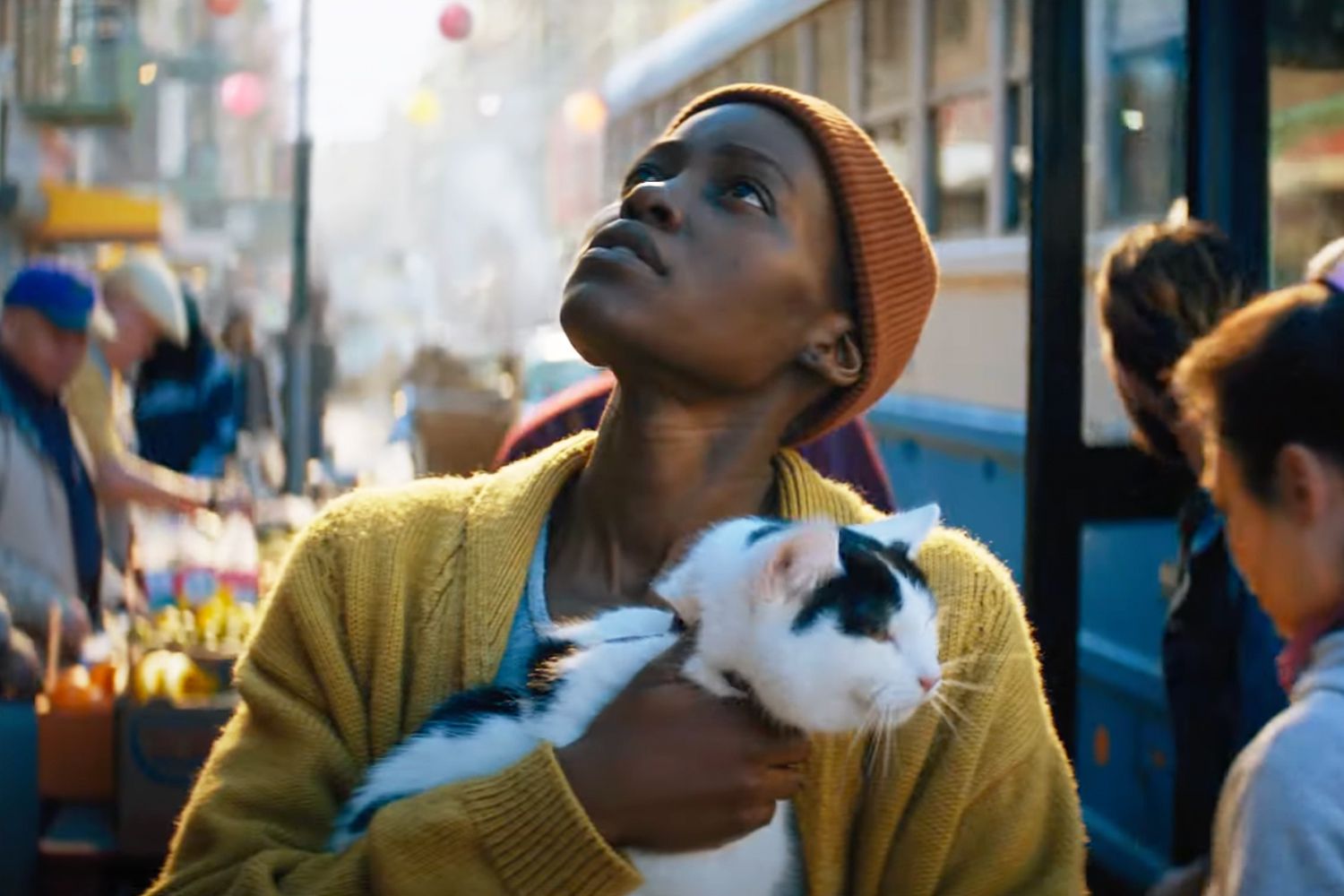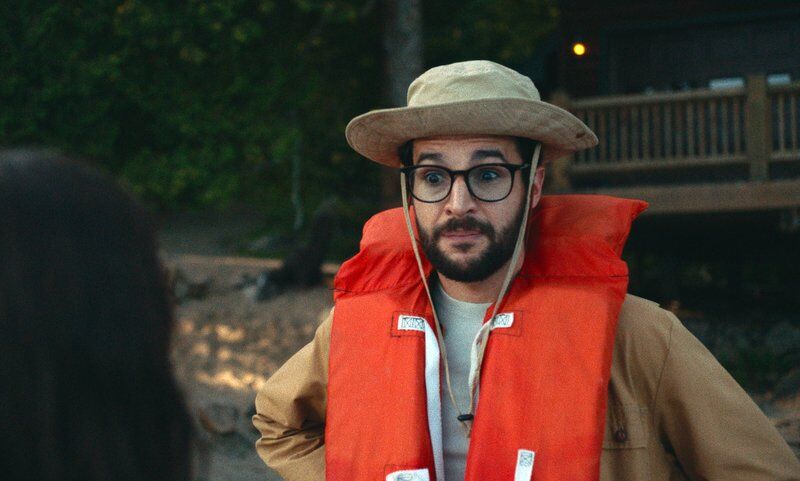The Poetic Horror of A Quiet Place: Day One. The A Quiet Place series has always been a masterclass in sensory storytelling, using silence as its most potent weapon. (Funny story, I first experienced a D-Box movie at the first A Quiet Place movie. A DBox movie uses haptic, vibrations in your chair to make the movie more immersive… hahaha.) And the silence weapon soars in Sarnoski’s take on the franchise. The movie actually isn’t an action/horror film, but rather, it’s a profound meditation on really living amidst chaos and despair. This third installment, far from merely following the formula of its predecessors, dares to explore what it means to truly be alive, even in the shadow of terminal illness and extraterrestrial threats.
First, let me say this … that I went with a pile of guys. We try to go every month or so, and we go watch movies where stuff blows up. So… aliens, obvs. But I think I miscalculated when selecting this film for this audience. It really didn’t work for them. I think they were scoring it in the 5’s and 6’s out of 10. Which, is pretty dank. But I saw the film differently. I saw something more here than met the eye. This thing had a really compelling message that I was enthralled with.
A Symphony of Silence
Day One revisits the inception of the alien invasion, moving the setting from rural America to the bustling streets of New York City. This shift amplifies the tension, as the usual city sounds become harbingers of death. Lupita Nyong’o stars as Sam, a terminally ill poet who finds herself in the midst of this chaos. Her portrayal is nothing short of cataclysmically-poetic, capturing the essence of a woman determined to live her final days with purpose and dignity. Nyong’o’s performance, a canvas of raw emotion, brings depth to a narrative that could easily have been overshadowed by its monstrous antagonists.
Obviously, the film’s sound design continues to be its standout feature, weaving moments of absolute silence with sudden, jarring noises. I had to be pulled from the ceiling of the theater after one jarringly traumatic jump/slam/scare. And it’s across this silent tableau that we get this truly unique viewing experience where the audience is constantly on edge, not just from the threat of the aliens, but from the rich tapestry of human emotion on display. The eerie quiet of deserted streets and the subtle sounds of breath and footsteps are as haunting as any monster roar.

From Surviving to Living
Unlike the first film, which focused on mere survival, Day One delves into the theme of truly living. Sam’s journey is not just about evading aliens but about finding moments of joy and meaning in a world turned upside down. While everyone else is tiptoeing to the ports, her main goal? To get to her favorite pizza place in Harlem. It’s this bite of pizza that she hopes for that becomes a poignant metaphor for clinging to the small pleasures that make life worth living. This narrative choice elevates the film, offering a stark contrast to the grim reality of her illness and the pervasive threat of the aliens.
In a scene that encapsulates this theme, Sam and her companion, played by Joseph Quinn, use the cover of a thunderstorm to scream – howl – out their frustrations. It’s a cathartic release that resonates deeply, symbolizing the human need to express and feel, even when the expectations of life demand silence. This moment, among others, underscores the film’s poetic exploration of our deepest fears and desires.
A Metaphor for Modern Life
Day One is not just a horror film; it’s a reflection of our times. The aliens, with their hypersensitive hearing, represent the constant pressures and dangers we face in modern society. Whether it’s the fear of illness, the threat of economic collapse, or the relentless pace of life, the film’s monsters are a metaphor for the anxieties that stalk us daily. But in Sam’s struggle, we find a lesson in resilience and the power of the human spirit.
Sarnoski’s direction brings a fresh perspective to the franchise, infusing it with a sense of melancholy and hope. His previous work on Pig showed his ability to find beauty in the bleakest situations, and he brings that same sensibility to Day One. The film’s quieter moments, such as our hearing some of Sam’s poetry, watching Sam pick up a book in an abandoned store, having a glass of whiskey, are as impactful as its most intense sequences.
Conclusion: A Masterpiece of Horror Poetry
The Quiet Place: Day One is a triumph, blending horror with profound human drama. It challenges viewers to look beyond the surface and find deeper meaning in the characters’ struggles. The film’s poetic approach to storytelling makes it more than just a horror movie; it’s a meditation on life, death, and the moments in between. For anyone willing to look past the monsters and see the metaphor, Day One offers a powerful, emotional experience that lingers long after the credits roll.
And now? Come to find out – yesterday – it is reported that the film will get a sequel! haha. “I mean, definitely a good portion of those people [who survive the events of Day One] probably ended up on the island that we see in Part Two of A Quiet Place,” Sarnoski said. “I think there’s a good chance that they’re there, and definitely there’s a good chance we’re going to see them again. I just think they did an incredible job. And I think Paramount would be really happy to see where they ended up.” I for one am hear (haha) for it.
Edited by: CY


